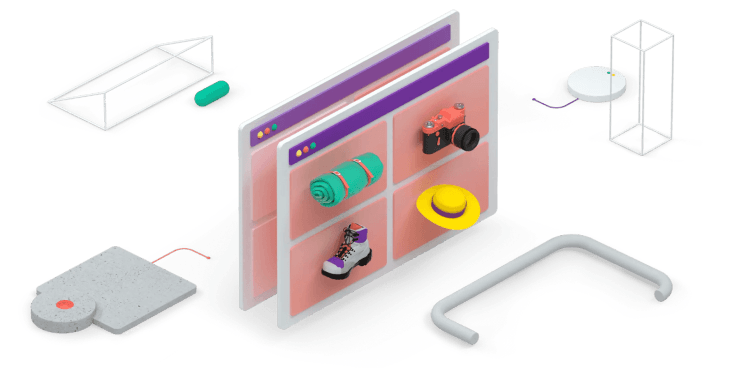What is headless commerce?

Headless ecommerce enables merchants to turn any internet-enabled device into a storefront, powering multiple customer touchpoints from one backend.
Benefits of a headless approach
Get to market sooner
Bring your plans to life faster than with legacy platforms, using Swell's powerful APIs and build with your preferred tech stack.
Customize everything
All platform features are available via a unified backend API. It's the same one that powers our admin dashboard and checkout, so you'll always be able to do things your way.
Unite B2B and B2C
Run your wholesale and retail operations from a single catalog and dashboard. Use separate storefronts made for each audience, or provide a unified experience for both.
Sell internationally
Localize your stores with multiple content languages and dynamic currency conversion, plus pricing in local currencies with supported payment gateways.
Why headless, why now?
In software architecture, a monolith is an application that has all data storage, business logic, and user interfaces contained in the one tightly coupled system. Shopify and WordPress are two of the most popular monolithic applications today.
Released in 2006 and 2003, they enabled a new generation of merchants and publishers to get online, combining a back office admin dashboard, theme customization editor, and a template rendering engine for the theme that displays the website visitors see.
As with most monoliths, features have been added over time, resulting in different coding patterns and a maze of dependencies between various parts of the system. The themes have to work within the platform’s rigid templating system, and because they have to support old websites, the technology hasn’t changed much in the last 10 years.
Meanwhile, frontend web development moves exponentially fast.
Developers are reaching for JavaScript libraries like React, Vue, and Svelte to build highly interactive websites and apps, assembling data from various sources via API, and using open-source code libraries to move quickly and avoid reinventing the wheel.
- HeadlessMonolithic
- One backend can power multiple frontends and sales channelsvsOne backend powers one frontend, and the two sides are tightly coupled together
- Provides a single source of truth for products, customers, orders, content, and promotionsvsProvides store administration, product management, and an editor in one system
- No technology lock-in for frontends, allowing for any capability the backend supportsvsGood for simple use cases, struggles to meet complex requirements
When evaluating headless solutions, it’s critical to assess the scope of the API (what it can do) and the developer experience (how easy it is to work with).
Headless vs. API-first
These terms are sometimes used interchangeably, but have some important philosophical and practical differences. A number of monolithic CMS and ecommerce vendors have added APIs to their products and now market themselves as headless. Since these are—quite literally—an afterthought, there are some common pitfalls:
- Not all platform functionality is available via API, limiting the scope of what developers can do.
- Functionality provided by 3rd-party apps isn’t available via API at all—unless the app/plugin vendor has their own, in which case there may be synchronization issues.
- To fit with existing architecture, multiple APIs are needed to interact with different parts of the platform, sometimes with inconsistent behavior.
The impact of these shortcomings often isn’t clear until later, when considerable resources have already been spent integrating the platform. When evaluating headless solutions, it’s critical to assess the scope of the API (what it can do) and developer experience (how easy it is to work with), preferably by building a small prototype of the desired solution.
In contrast, true API-first solutions make all system data and functionality available via a single unified API, or a suite of APIs with the same behavior and design patterns.
Unlimited ways to sell
Going headless doesn’t mean that you don’t have a storefront for customers to shop—only that you aren’t tied to a particular frontend technology and can adapt to new market trends.
Swell is a modern SaaS ecommerce platform making sophisticated customer experiences more accessible to smaller businesses, with capabilities like subscriptions, content management, and localization baked into the core.